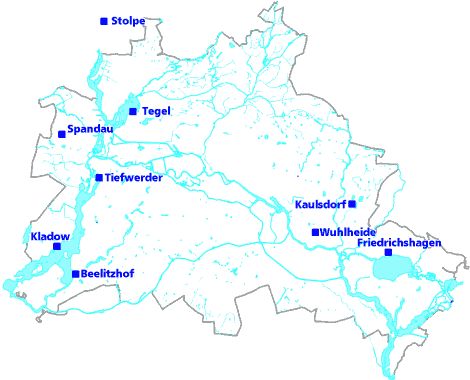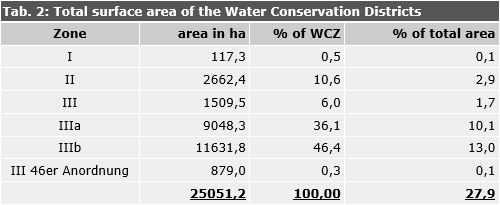Groundwater Management
The dramatic reduction in demands on groundwater especially in the neighbourhood of the recently de-commissioned Waterworks, has resulted in groundwater levels rising by up to 3m. This is especially so in the pleistocene watercourse region of southeast Berlin where areas have a high level water table. This has resulted in residential estates being plagued by water-logged cellars, eg. Rudow in the 1990’s. In July 2001, in order to achieve groundwater states which allows settlement areas without water damages and as a reaction to the spatial unequal development of water demand inside Berlins, the Berlin senate made the following decisions:
In the long term, 50 percent more groundwater should be available for the public water supply in the eastern half of the city, to be taken from the regional network where consumption allows. The groundwater supply to southeast Berlin should be increased to a future 90 Mio. m3 per year from the present 60 Mio. m3 per year. After repair and rennovation, the Berlin water-pipe network should supply drinking water to the west of the city.
Through the additional groundwater withdrawal for drinking water production in the neighbourhood of the waterworks in southeast Berlin, the increase of the groundwater level can be stopped and consistent groundwater states for residential areas can be guaranteed.
As a consequence of the increased drinking waters production in southeast Berlin and in order to safeguard public drinking water supplies, the Berlin water companies must cut production in the western half of the city by 30 Mio. m3 per year. Thus increasing groundwater reserves in the proximity of the waterworks where production is reduced, but also spreading the problems of water-logging from east to west. In order to counteract this, the levels of groundwater concentration (through the infusion of purified surface water into the subsoil) should be controlled to reduce the problem and achieve an approximate levelling of groundwater states throughout the city.
The momentarily de-commissioned Jungfernheide waterworks offers the BWB an immediate reduction of drinking water production in the western half of the city. To achieve a long term increase in production levels in the eastern half of the city, the local waterworks must be restored and modernised accordingly. Re-development is due to start shortly at the currently de-commissioned Johannisthal waterworks. These measures are scheduled for completion by 2009 at the latest.
In the meantime, work should be intensified to eliminate subsoil pollution in the catchment areas of the Johannisthal and Wuhlheide waterworks. Through the controlled increase of groundwater reserves, redevelopment can be accelerated on the large-scale Spree project (contaminated waste disposal sites in Niederschöneweide, Johannisthal und Adlershof).


